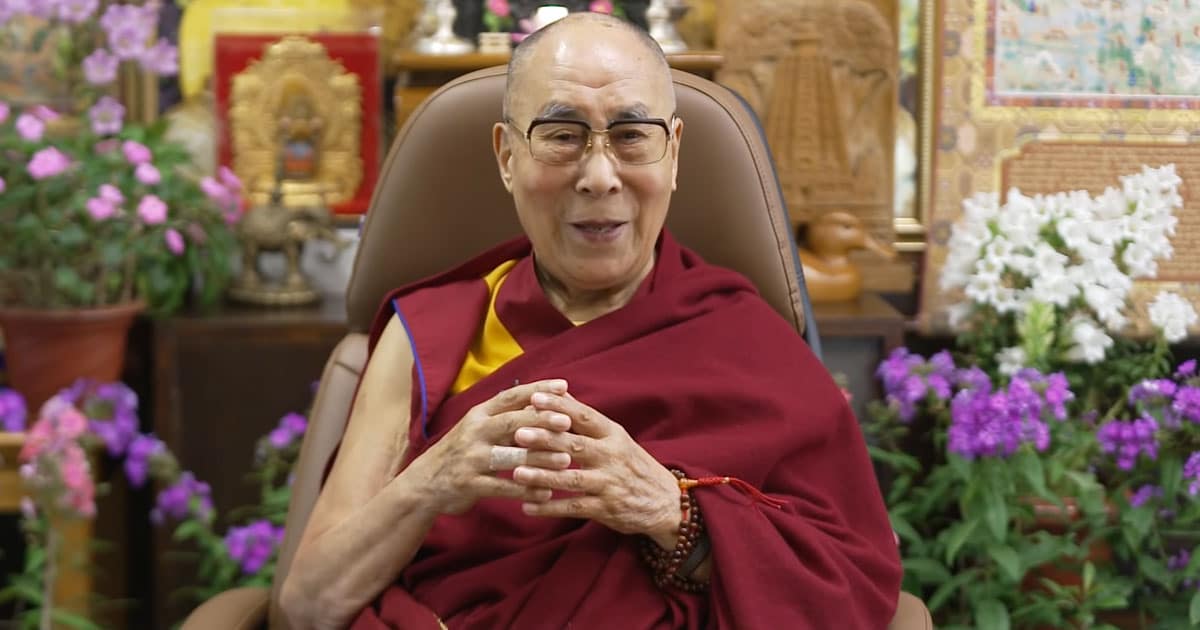Dalai Lama is a title given by the Tibetan people to the foremost spiritual leader of the Gelug or “Yellow Hat” school of Tibetan Buddhism, the newest of the classical schools of the religion. He is considered to be the successor in a line of tulkus who are believed to be incarnations of Avalokiteśvara, the Bodhisattva of Compassion.
From 1642 until 1705, and from 1750 to the 1950s, the Dalai Lamas or their regents headed the Tibetan government which governed all or most of the Tibetan Plateau with varying degrees of autonomy under the Qing dynasty of China, in which Tibet had been under non-Tibetan suzerainty, and a period of disputed “de facto independence” between 1913 and 1951.
This Tibetan government also enjoyed the patronage and protection of Mongol kings of the Khoshut and Dzungar Khanates (1642–1720) and then of the emperors of the Manchu-led Qing dynasty (1720–1912). In 1913, several Tibetan representatives, including Agvan Dorzhiev signed a treaty between Tibet and Mongolia, proclaiming mutual recognition and their independence from China; however, the legitimacy of the treaty and declared the independence of Tibet was rejected by both the Republic of China and the People’s Republic of China. The Dalai Lamas headed the Tibetan government afterward despite that, till 1951.

The 14th Dalai Lama was formally enthroned on 17 November 1950, during the Battle of Chamdo with the People’s Republic of China. In 1951, the Dalai Lama and Tibetan government were pressured into accepting the Seventeen Point Agreement for the Peaceful Liberation of Tibet by which it became formally incorporated into the People’s Republic of China. Fearing for his life in the wake of a revolt in Tibet in 1959, the 14th Dalai Lama fled to India, from where he is leading in exile from Dharamshala, Himachal Pradesh.
Today marks the birthday of His Holiness Dalai Lama, let’s understand in depth how the spiritual leader is spreading peace, happiness, and love.
Safeguarding Tibet
Before taking refuge in India, Dalai Lama went to Beijing for peace talks with Mao Zedong and other Chinese leaders, including Deng Xiaoping and Chou Enlai in 1954. Since the Chinese invasion, His Holiness has appealed to the United Nations on the issue of Tibet. Following this, the General Assembly adopted three resolutions on Tibet in 1959, 1961, and 1965.
His Holiness views Tibet to become a refuge of peace at the heart of Asia, where all human beings can co-exist in love and peace and preserve the delicate environment. In his address to members of the United States Congress in Washington, D.C. on September 21, 1987, he proposed the following peace plan:
- Transformation of Tibet into a zone of peace.
- Abandonment of China’s population transfer policy that threatens the very existence of the Tibetans as a people.
- Respect for the Tibetan people’s fundamental rights and democratic freedoms.
- Restoration and protection of Tibet’s natural environment and stopping China’s use of Tibet to produce nuclear weapons and dumping of nuclear waste.
- Commencement of earnest negotiations on the future status of Tibet and relations between the Tibetan and Chinese.
Following this, the Dalai Lama also addressed the European Parliament in Strasbourg on June 15, 1988, in which he proposed talks between the Chinese and Tibetans, leading to a self-governing democratic political entity for all three provinces of Tibet. This entity would be associated with the People’s Republic of China, and the Chinese Government would continue to remain responsible for Tibet’s foreign policy and defense.
Nobel Peace Prize
The 14th Dalai Lama was awarded the Nobel Peace Prize for his non-violent fight for the freedom of Tibet in 1989. The religious icon has consistently advocated policies of non-violence, even in the face of extreme aggression traveling to more than sixty-two countries spanning six continents.
His Holiness has received over 84 awards, honorary doctorates, prizes, etc., to recognize his message of peace, non-violence, inter-religious understanding, universal responsibility, and compassion. He has also authored more than 72 books.
Three Commitments
The Dalai Lama has three main commitments in life.
- His Holiness promotes human values such as compassion, forgiveness, tolerance, contentment and self-discipline.
- His Holiness is committed to promoting religious harmony and understanding among the world’s major religious traditions. Despite philosophical differences between them, all major world religions have the same potential to create good human beings, he stresses. Therefore, all religious traditions need to respect one another and recognize the value of their respective traditions, he says.
- His Holiness’ third commitment is to preserve Tibet’s Buddhist culture, a culture of peace and non-violence and protect the natural environment of Tibet.
Love and respect for India
His Holiness highly speaks of the rich ancient Indian understanding of the workings of the mind and emotions and mental training techniques, such as meditation, developed by Indian traditions, are of great relevance today. Since India has a long history of logic and reasoning, he is confident that its ancient knowledge, viewed from a secular, academic perspective, can be combined with today’s modern education. Heb has lately spoken of his commitment to reviving awareness of the value of ancient Indian knowledge among young Indians today.
“We Tibetians owe a great debt to India. Longstanding spiritual and cultural links exist between the two countries.”

